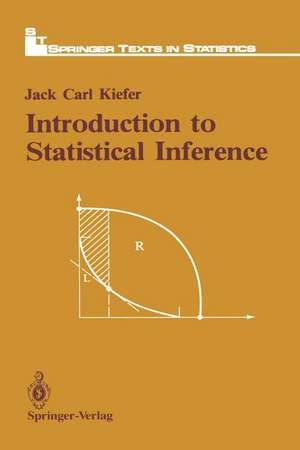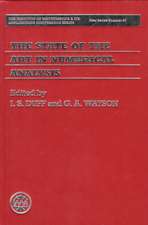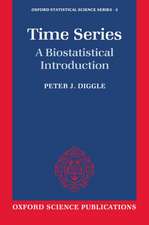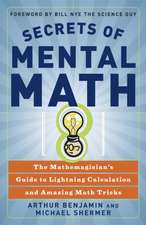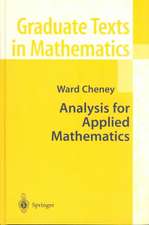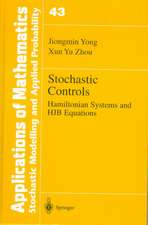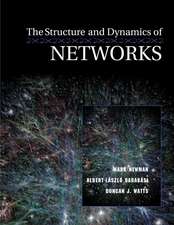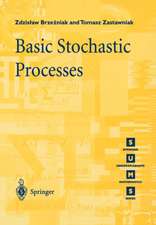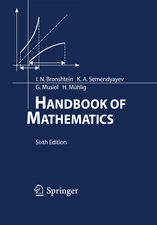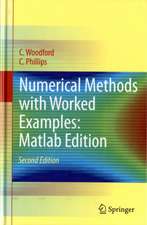Introduction to Statistical Inference: Springer Texts in Statistics
Autor Jack C. Kiefer Editat de Gary Lordenen Limba Engleză Paperback – 16 dec 2011
Din seria Springer Texts in Statistics
-
 Preț: 400.60 lei
Preț: 400.60 lei - 15%
 Preț: 559.21 lei
Preț: 559.21 lei - 18%
 Preț: 903.62 lei
Preț: 903.62 lei - 20%
 Preț: 764.93 lei
Preț: 764.93 lei - 20%
 Preț: 643.55 lei
Preț: 643.55 lei - 20%
 Preț: 717.71 lei
Preț: 717.71 lei - 13%
 Preț: 487.08 lei
Preț: 487.08 lei - 20%
 Preț: 633.82 lei
Preț: 633.82 lei - 20%
 Preț: 697.48 lei
Preț: 697.48 lei - 15%
 Preț: 676.86 lei
Preț: 676.86 lei - 15%
 Preț: 621.10 lei
Preț: 621.10 lei - 20%
 Preț: 700.51 lei
Preț: 700.51 lei - 18%
 Preț: 743.11 lei
Preț: 743.11 lei - 18%
 Preț: 695.29 lei
Preț: 695.29 lei -
 Preț: 253.64 lei
Preț: 253.64 lei - 17%
 Preț: 525.27 lei
Preț: 525.27 lei - 17%
 Preț: 428.39 lei
Preț: 428.39 lei - 19%
 Preț: 571.81 lei
Preț: 571.81 lei - 20%
 Preț: 567.30 lei
Preț: 567.30 lei -
 Preț: 359.54 lei
Preț: 359.54 lei -
 Preț: 477.28 lei
Preț: 477.28 lei - 20%
 Preț: 570.35 lei
Preț: 570.35 lei - 15%
 Preț: 650.86 lei
Preț: 650.86 lei - 19%
 Preț: 626.93 lei
Preț: 626.93 lei - 18%
 Preț: 948.29 lei
Preț: 948.29 lei -
 Preț: 500.46 lei
Preț: 500.46 lei - 18%
 Preț: 746.59 lei
Preț: 746.59 lei -
 Preț: 403.75 lei
Preț: 403.75 lei -
 Preț: 403.37 lei
Preț: 403.37 lei -
 Preț: 394.71 lei
Preț: 394.71 lei - 18%
 Preț: 946.69 lei
Preț: 946.69 lei - 15%
 Preț: 578.67 lei
Preț: 578.67 lei - 15%
 Preț: 702.54 lei
Preț: 702.54 lei -
 Preț: 407.01 lei
Preț: 407.01 lei - 18%
 Preț: 895.89 lei
Preț: 895.89 lei - 15%
 Preț: 600.80 lei
Preț: 600.80 lei - 23%
 Preț: 684.78 lei
Preț: 684.78 lei - 19%
 Preț: 543.08 lei
Preț: 543.08 lei - 15%
 Preț: 595.86 lei
Preț: 595.86 lei -
 Preț: 423.18 lei
Preț: 423.18 lei - 15%
 Preț: 656.10 lei
Preț: 656.10 lei - 15%
 Preț: 682.90 lei
Preț: 682.90 lei - 18%
 Preț: 814.43 lei
Preț: 814.43 lei -
 Preț: 402.76 lei
Preț: 402.76 lei -
 Preț: 408.54 lei
Preț: 408.54 lei
Preț: 529.92 lei
Preț vechi: 623.44 lei
-15% Nou
Puncte Express: 795
Preț estimativ în valută:
101.42€ • 109.48$ • 85.04£
101.42€ • 109.48$ • 85.04£
Carte tipărită la comandă
Livrare economică 19 aprilie-03 mai
Preluare comenzi: 021 569.72.76
Specificații
ISBN-13: 9781461395805
ISBN-10: 1461395801
Pagini: 348
Ilustrații: VIII, 334 p.
Dimensiuni: 155 x 235 x 18 mm
Greutate: 0.49 kg
Ediția:Softcover reprint of the original 1st ed. 1987
Editura: Springer
Colecția Springer
Seria Springer Texts in Statistics
Locul publicării:New York, NY, United States
ISBN-10: 1461395801
Pagini: 348
Ilustrații: VIII, 334 p.
Dimensiuni: 155 x 235 x 18 mm
Greutate: 0.49 kg
Ediția:Softcover reprint of the original 1st ed. 1987
Editura: Springer
Colecția Springer
Seria Springer Texts in Statistics
Locul publicării:New York, NY, United States
Public țintă
ResearchCuprins
1 Introduction to Statistical Inference.- 2 Specification of a Statistical Problem.- 2.1 Additional Remarks on the Loss Function.- 3 Classifications of Statistical Problems.- 4 Some Criteria for Choosing a Procedure.- 4.1 The Bayes Criterion.- 4.2 Minimax Criterion.- 4.3 Randomized Statistical Procedures.- 4.4 Admissibility: The Geometry of Risk Points.- 4.5 Computation of Minimax Procedures.- 4.6 Unbiased Estimation.- 4.7 The Method of Maximum Likelihood.- 4.8 Sample Functionals: The Method of Moments.- 4.9 Other Criteria.- 5 Linear Unbiased Estimation.- 5.1 Linear Unbiased Estimation in Simple Settings.- 5.2 General Linear Models: The Method of Least Squares.- 5.3 Orthogonalization.- 5.4 Analysis of the General Linear Model.- 6 Sufficiency.- 6.1 On the Meaning of Sufficiency.- 6.2 Recognizing Sufficient Statistics.- 6.3 Reconstruction of the Sample.- 6.4 Sufficiency: “No Loss of Information”.- 6.5 Convex Loss.- 7 Point Estimation.- 7.1 Completeness and Unbiasedness.- 7.2 The “Information Inequality”.- 7.3 Invariance.- 7.4 Computation of Minimax Procedures (Continued).- 7.5 The Method of Maximum Likelihood.- 7.6 Asymptotic Theory.- 8 Hypothesis Testing.- 8.1 Introductory Notions.- 8.2 Testing Between Simple Hypotheses.- 8.3 Composite Hypotheses: UMP Tests; Unbiased Tests.- 8.4 Likelihood Ratio (LR) Tests.- 8.5 Problems Where n Is to Be Found.- 8.6 Invariance.- 8.7 Summary of Common “Normal Theory” Tests.- 9 Confidence Intervals.- Appendix A Some Notation, Terminology, and Background Material.- Appendix B Conditional Probability and Expectation, Bayes Computations.- Appendix C Some Inequalities and Some Minimization Methods.- C.1 Inequalities.- C.2 Methods of Minimization.- References.
